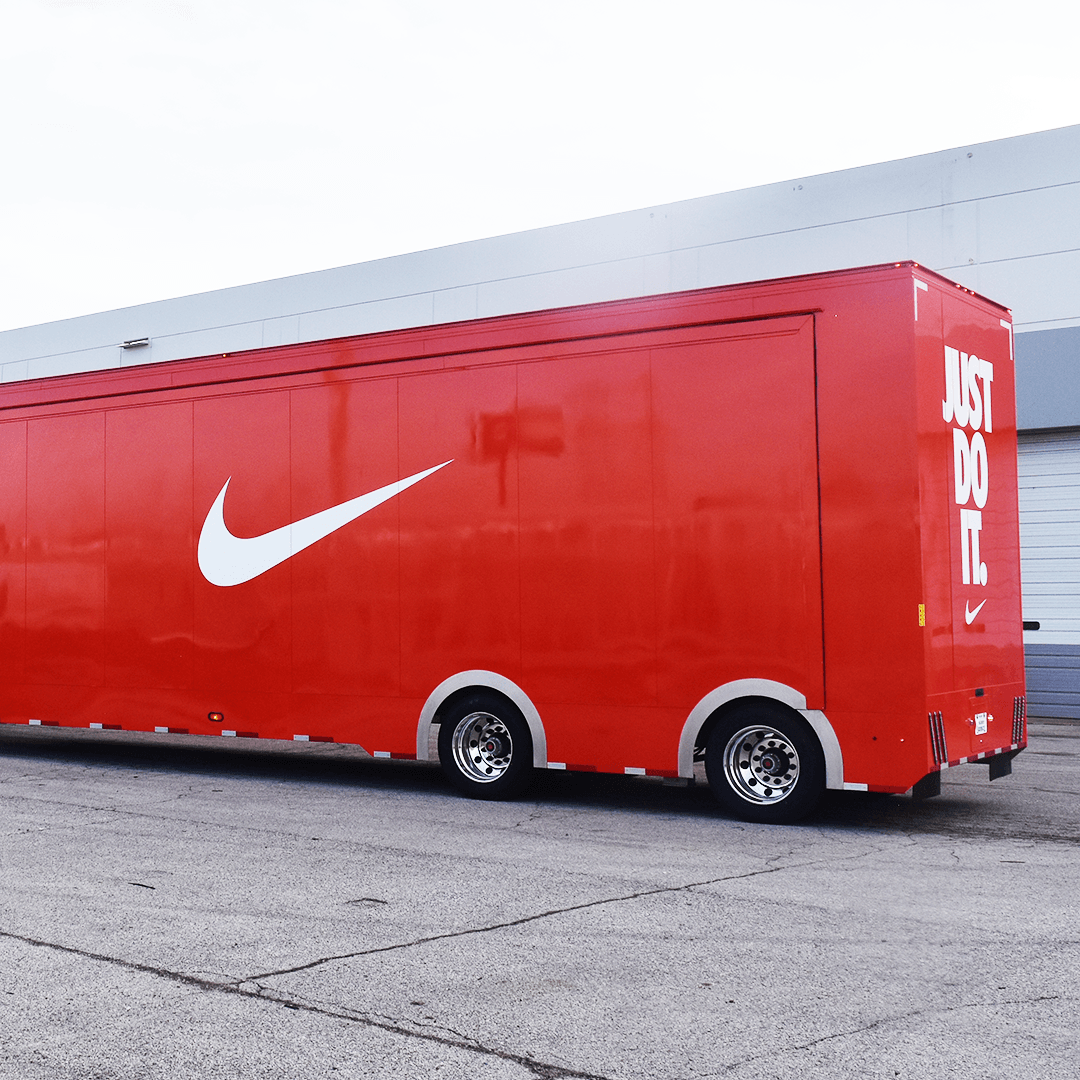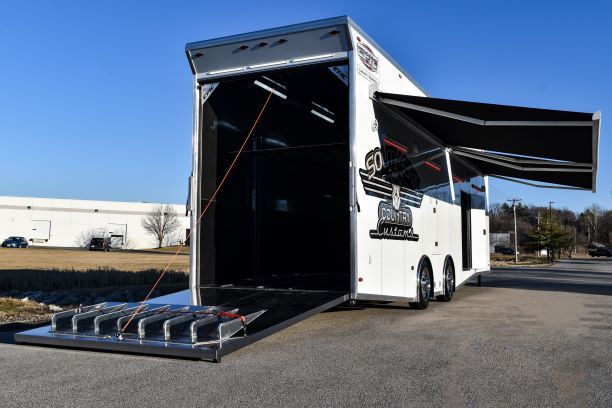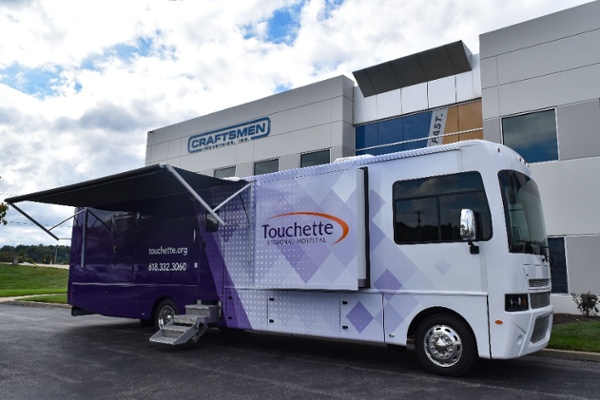Custom Trailer Design Tips for Event Marketers
Make Your Brand the Star of the Show!
5 min read
Craftsmen Industries Jul 19, 2025 9:02:09 AM

Experiential marketing trailers are built to deliver immersive, real-world brand moments. Whether stationed at high-traffic events, positioned in city centers, or used for mobile tours, these trailers connect brands with audiences in meaningful, face-to-face ways. They offer more than visibility; they provide hands-on interaction, storytelling, and personalized engagement.
When designed and executed well, they create lasting impressions that enhance brand perception and foster audience engagement. Their impact is both visual and emotional, and it is immediate.
However, to truly understand the value they bring to a campaign, we must go beyond impressions and engagement. Ultimately, it's the return on investment that proves their effectiveness and shapes future strategy.
Before we get into the numbers, it's essential to define what ROI means in the context of experiential marketing.
Focusing solely on revenue vs. cost limits the actual value of experiential marketing trailers. These campaigns do more than drive immediate sales; they shape perception, build relationships, and deepen customer engagement over time.
To accurately measure impact, ROI should also account for:
A broader ROI lens helps brands assess long-term value, not just short-term returns.
To measure effectively, you need a baseline. Clear KPIs should be set before the trailer hits the road. These could include:
Defining success before activation makes post-campaign analysis much more meaningful.
Understanding what happens during the trailer activation is key to evaluating its performance.
Two of the most basic metrics are the number of people who enter the trailer and the duration of their stay. A high volume with low engagement time may signal shallow interest, whereas longer dwell times suggest deeper interaction.
Tools for measurement include:
These numbers reveal the trailer's ability to attract and retain attention.
Capturing data from attendees turns a one-time visit into a long-term opportunity. Brands should aim to collect:
Digital tools such as tablets or branded QR codes make this process smooth and non-intrusive. Collected data should be integrated with your CRM to enable timely follow-ups.
Beyond presence, look at what visitors do:
These insights help assess which elements were most effective and which may need refining.
The experience doesn't end on-site. Many benefits show up in digital engagement and customer behavior after the trailer rolls away.
Experiential trailers are inherently shareable. You should monitor:
Social listening tools and hashtag trackers can capture this data across platforms. This expands the reach of your trailer far beyond the physical footprint.
Check your website analytics during and shortly after the activation. Look for:
Use unique tracking links or QR codes in your trailer to accurately direct visitors and track their behavior.
While not every visitor purchases the spot, trailers can influence future purchases. Consider:
If you notice a lift in sales or store visits following the activation, that impact can be directly tied to your trailer campaign.
To truly measure ROI, you'll need to compare these outputs with your investment.
List every cost associated with the campaign, including:
These form the base against which all results will be compared.
Once you have your outputs and costs, calculate basic ROI using this formula:
ROI (%) = [(Total Value Gained - Total Cost) / Total Cost] x 100
Here, "Total Value Gained" might be revenue, lead value, or customer lifetime value (CLV) influenced by the activation.
If revenue isn't immediate or measurable, estimate soft ROI based on:
These calculations enable you to make more informed investment decisions for future campaigns.
Measuring ROI becomes easier and more accurate when using the right tools.
Use platforms that integrate with your existing CRM. Examples include:
These systems help tie trailer engagement directly to marketing outcomes.
Incorporate tools for monitoring both real-time and post-event performance:
Centralized, visual reporting makes ROI more accessible to internal and client stakeholders.
Modern trailers can be equipped with innovative technology to track performance live:
These insights enable brands to adapt during the campaign, not just after it ends.
ROI (Return on Investment) in experiential marketing trailers measures the value your campaign delivers against the investment you made. It's not limited to direct sales; it includes brand awareness, lead generation, engagement, and customer sentiment, all of which contribute to long-term business growth.
Key ROI metrics include event attendance, dwell time, number of leads generated, sales uplift, and social media engagement. These indicators help assess how many people your trailer reached, how deeply they engaged, and whether the campaign moved them closer to conversion.
Brands can calculate ROI using: (Total Revenue – Campaign Cost) ÷ Campaign Cost × 100. If the goal is not revenue, they should calculate cost per lead or engagement instead. This approach helps compare how efficiently the campaign performed compared to other marketing efforts.
Reliable measurement tools include QR codes, event apps, badge scanners, and promo codes to track participation and purchases. Analytics platforms help monitor digital traffic, while surveys and feedback forms capture audience sentiment and qualitative insights.
Common challenges include linking sales directly to the event and capturing both tangible and intangible results. To address this, brands should utilize trackable tools, such as unique codes and control groups, combine data with feedback, and measure long-term engagement beyond the event itself.
Experiential marketing trailers create high-impact, face-to-face engagement. But real success comes from measuring what matters. By aligning key metrics with strategic goals and tracking results beyond the event, you transform impressions into insights and insights into actionable improvements.
Refining your approach with data helps scale smarter, not just bigger.
Ready to turn your subsequent trailer activation into measurable success? Visit www.craftsmenind.com to see how Craftsmen Industries delivers ROI-focused mobile experiences.

Make Your Brand the Star of the Show!

Demand for mobile medical clinics providing local medical testing, dental care, preventative health screenings, and more is on the rise. If you are a...

The timing and quality of the emergency response is often the difference between life and death. The vehicles must be mobile yet still provide...